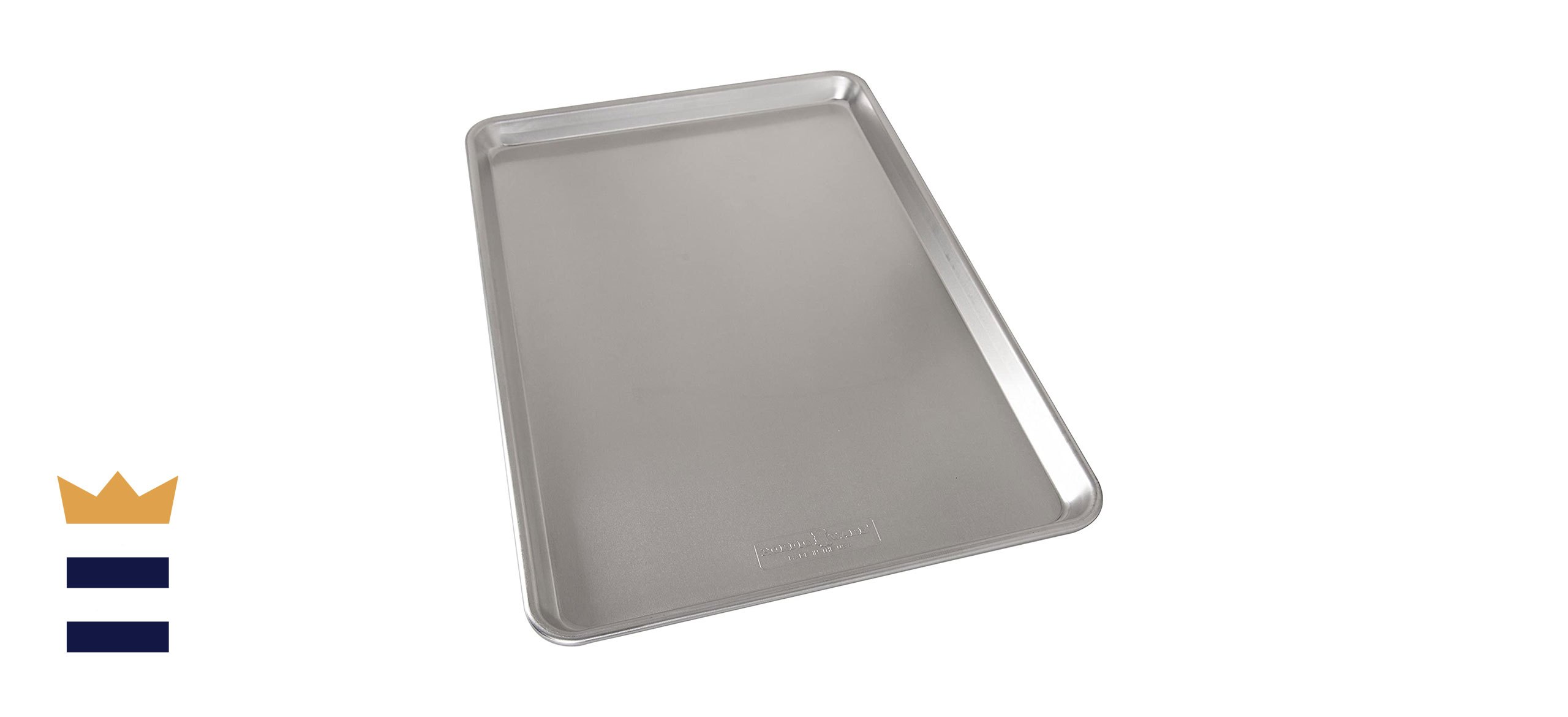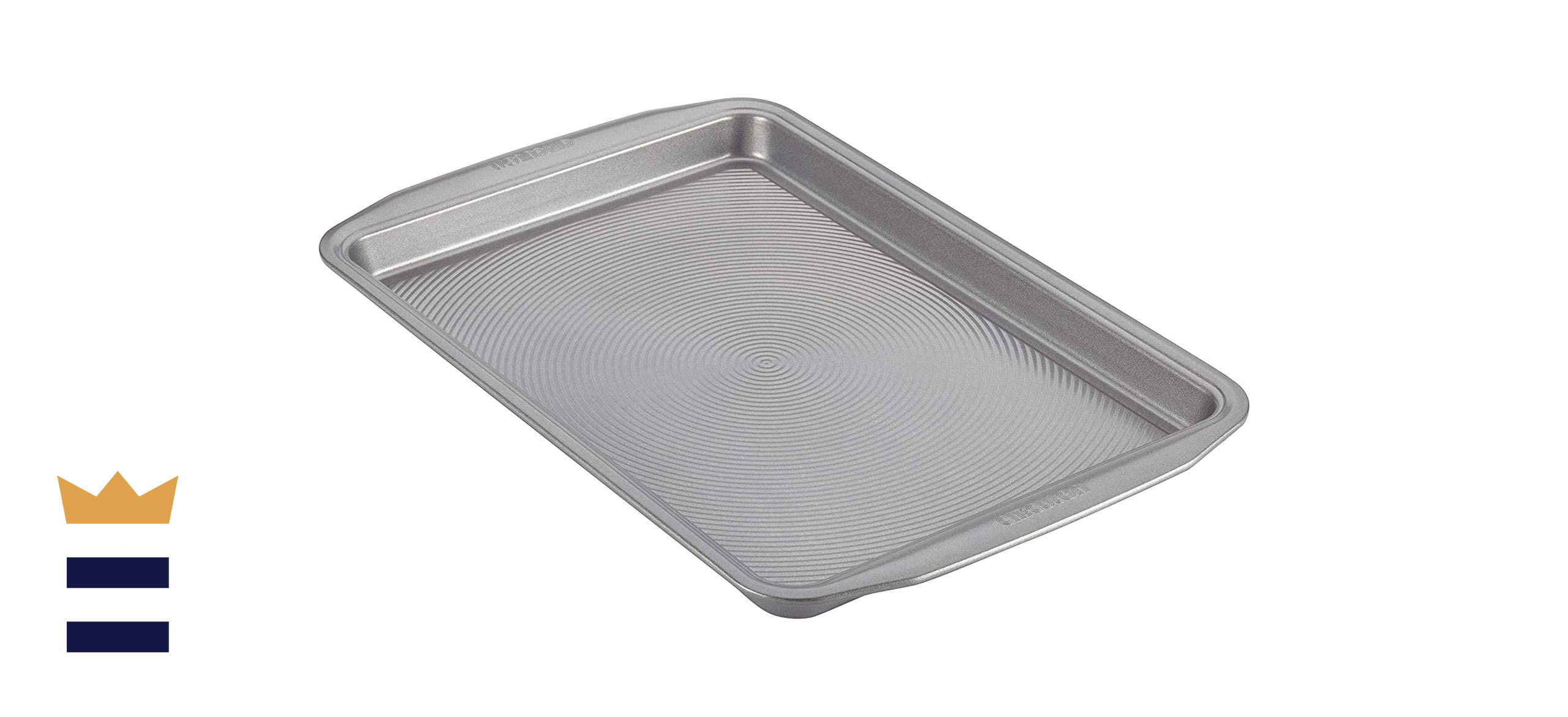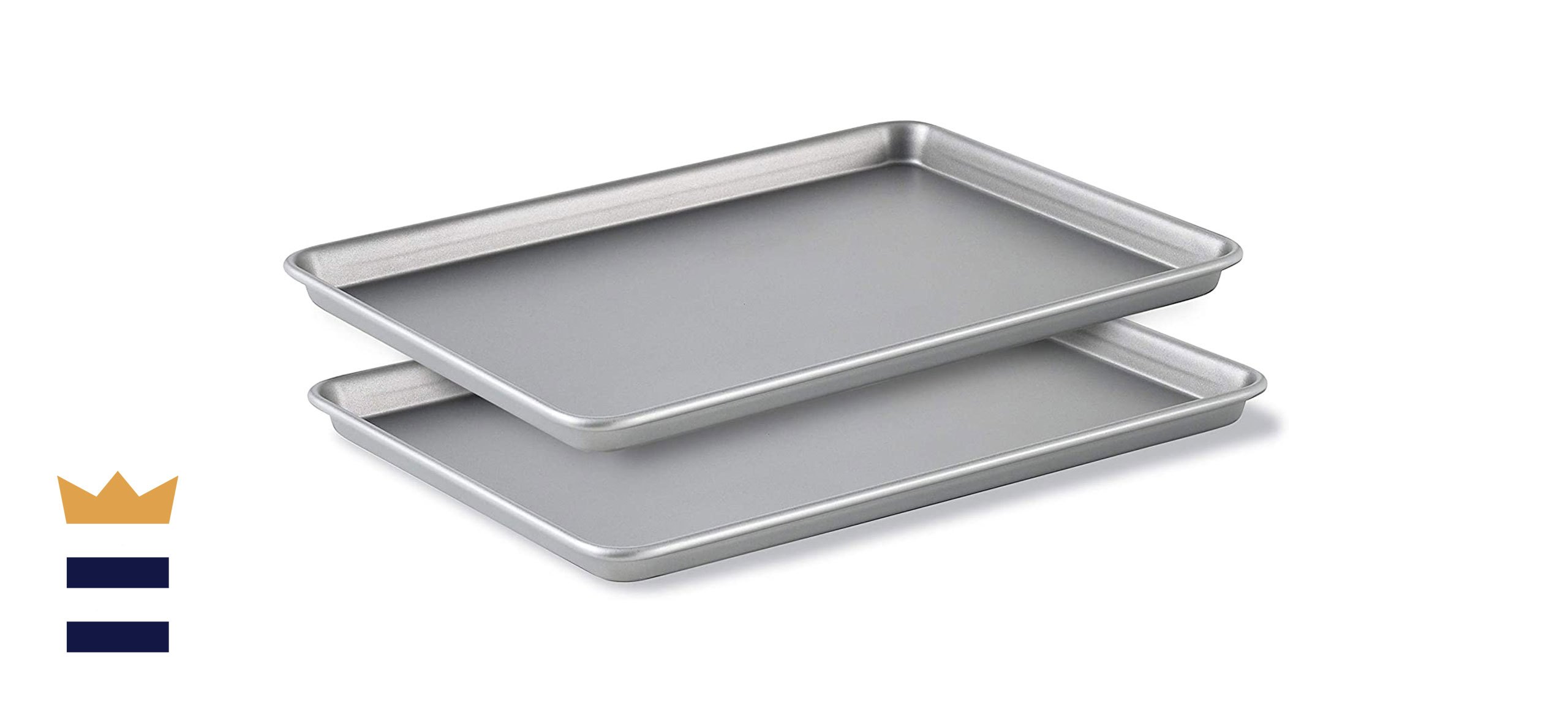Which baking sheet is best?
More shallow than a roasting dish but with raised edges on all sides, unlike a cookie sheet, a baking sheet is a must-have piece of cookware for most households. However, some baking sheets can be flimsy, so it’s important to find out which are worth buying and which should be avoided.
Once you know what you need from a baking sheet, it will be simpler to find your perfect model. Looking for a heavy-duty commercial-quality baking sheet that’s available for home use? Try the Nordic Ware Natural Aluminum Commercial Baker’s Half Sheet.
What to know before you buy a baking sheet
Material
Aluminum is a common baking sheet material and has its benefits when it comes to cookware. It conducts heat quickly and evenly for a crisp underside and consistent results across the tray. However, it isn’t the most durable material so it can feel flimsy and may warp over time.
Steel is arguably more sturdy and durable than aluminum but doesn’t conduct heat as effectively. However, you can find some high-end baking sheets with a layer of aluminum between two layers of steel for a blend of strength and even heating.
Basic aluminum and steel baking sheets often have a nonstick coating to keep foods from sticking to them.
There’s another option, however, which is hard anodized aluminum. This type of aluminum has undergone a hardening process to make it significantly more durable. It also has natural nonstick properties, so it doesn’t require a nonstick coating.
Size
There are standard sizes for baking sheets. Full sheets measure 26-by-18 inches, but this is too large for most home ovens, so the largest size you’ll generally find outside of catering supply stores is a two-third sheet size, which measures 21-by-15 inches. Then you have the half-sheet size at 18-by-13, which is one of the most popular baking sheet sizes, and the compact quarter sheet size at 13-by-9.5 inches.
It’s worth noting, however, that these sizes are measured around the outer edge of the baking sheet, and some manufacturers list the internal size or the size of the cooking area instead. So, for instance, you might see a half-sheet size listed as measuring 17-by-12 inches rather than 18-by-13 inches. If you need multiple sizes, you can sometimes find baking sheet sets that contain baking sheets in two or more dimensions.
What to look for in a quality baking sheet
Rim
Classic baking sheets have a raised edge or rim. Flimsy rims don’t offer enough structural support to the sheet as a whole and can lead to warping. Reinforced rolled rims are generally the best and strongest option.
Textured surface
Some baking sheets have a lightly textured surface, such as small ridges in a circular or wavy pattern. This textured surface has two uses — it allows more air to circulate beneath the food for a crispier case and helps keep food from sticking to the tray.
Rack
Some baking sheets come with racks that fit inside. You can use them as cooling racks or for cooking food that releases a lot of fat.
Nesting design
When baking sheets are sold as a set, they’re often designed so that they’ll nest inside one another, even if they’re the same size.
How much you can expect to spend on a baking sheet
Inexpensive baking sheets can cost as little as $5 apiece, while high-end options can cost up to $25 each. Most decent baking sheets cost roughly $10-$15 each, and there’s no real need to spend more.
Baking sheet FAQ
Is a baking sheet the same as a cookie sheet?
A. Although the terms are sometimes used interchangeably, a baking sheet is different from a cookie sheet. The most obvious difference is that baking sheets have rims around the edge, whereas cookie sheets don’t, so that it’s easier to lift cookies off the surface without damaging them. Cookie sheets also don’t follow the same sizing conventions as baking sheets.
What is a baking sheet used for?
A. Baking sheets are extremely versatile, so every keen cook should own at least one. You can use them for baking, cooking and roasting a wide range of foods, including sheet cakes, bread rolls, pastries, pizza, oven fries and vegetables. Although cookie sheets are slightly better suited to the task, you can also use baking sheets for baking cookies.
What’s the best baking sheet to buy?
Top baking sheet
Nordic Ware Natural Aluminum Commercial Baker’s Half Sheet
What you need to know: This aluminum baking sheet is ideal for anyone who wants to avoid baking sheets with nonstick coatings.
What you’ll love: Made from even-heating aluminum for consistent results. This is a heavy-duty option that doesn’t rust or warp and could last a lifetime. It’s made in the U.S.
What you should consider: The embossed logo gets in the way slightly and is tricky to clean around.
Where to buy: Sold by Amazon
Top baking sheet for the money
Circulon Nonstick Baking Sheet
What you need to know: This is a reasonably priced baking sheet that’s available in a couple of different sizes and colors.
What you’ll love: The circular ridges on the cooking surface allow air to circulate underneath food while cooking, and it makes for easier release and cleanup. The rolled edges are durable and warp-resistant.
What you should consider: It feels fairly flimsy compared to some pricier baking sheets.
Where to buy: Sold by Amazon
Worth checking out
Calphalon Nonstick Baking Sheet
What you need to know: This set of two half-sheet size baking sheets is great for keen cooks who need multiple sheets.
What you’ll love: These pans are made from heavy-duty steel with interlocking layers of Calphalon’s quality nonstick coating for added durability. They have sturdy rolled rims and are dishwasher safe.
What you should consider: The rolled edges can get water stuck inside them that leads to rust.
Where to buy: Sold by Amazon
Sign up here to receive the BestReviews weekly newsletter for useful advice on new products and noteworthy deals.
Lauren Corona writes for BestReviews. BestReviews has helped millions of consumers simplify their purchasing decisions, saving them time and money.
Copyright 2021 BestReviews, a Nexstar company. All rights reserved.




